Celebrating What Makes SoMa Great as We Improve Transportation Safety
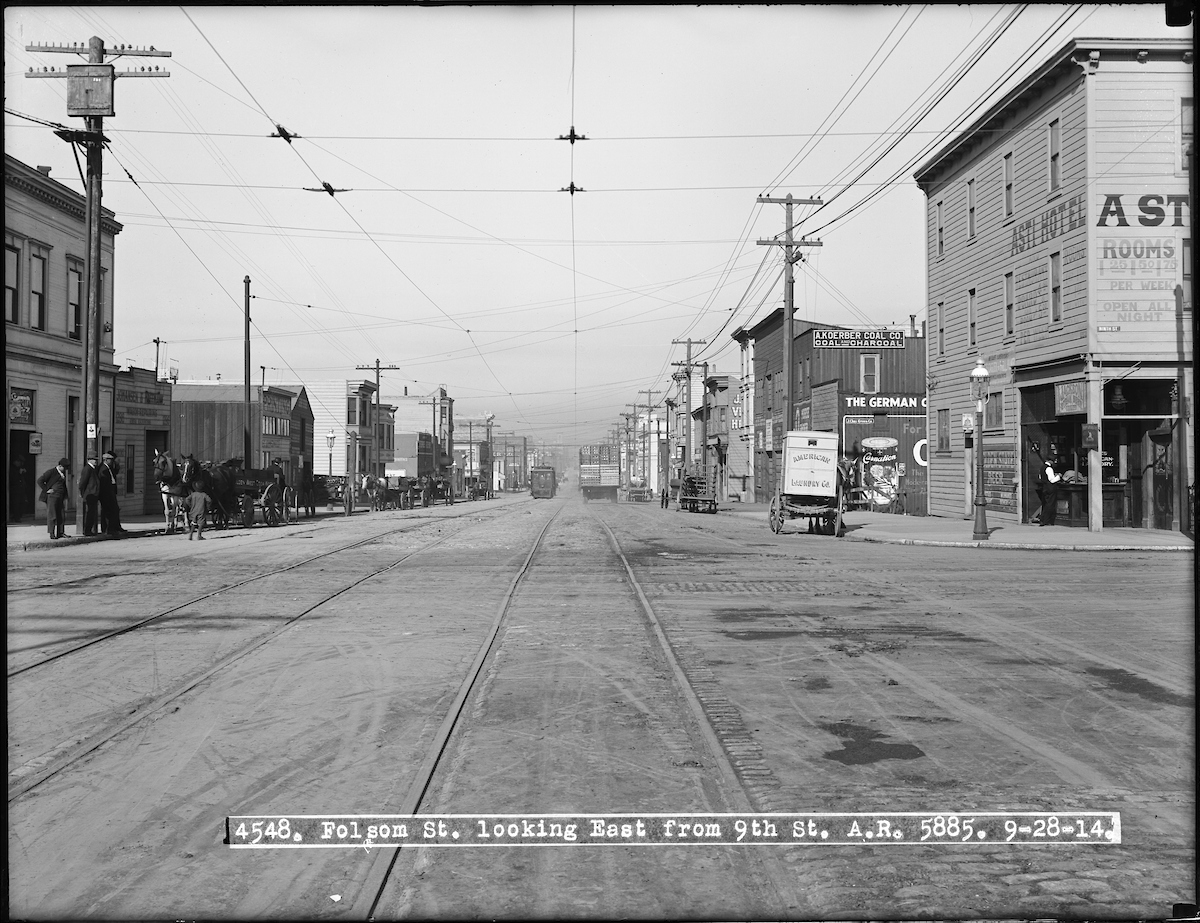
Folsom Street at 9th Street looking east (September 28, 1914).
We're excited to break ground in just a few months on the Folsom-Howard Streetscape Project. Before construction begins, we want to share a bit of Folsom Street's rich history and how we’re working to make the corridor safer.
Folsom is an eclectic street in the South of Market (SoMa) neighborhood. Originally, it was part of a one-way, east-west couplet with Howard Street that served an industrial district. Now, this area has been transformed into a cultural, residential and transit-rich hub.
Filipino Culture and Community
Over the decades, SoMa has faced several challenges, including intense redevelopment efforts that were not only rampant in downtown San Francisco, but in the Fillmore neighborhood as well. Those efforts displaced approximately 4,000 blue-collar Filipino residents, including elders. But the residents pushed back by forming the Tenants and Owners Development Corporation (TODCO). The group fought to replace low-income senior housing to offset the displacement. Community organizers also pushed for naming streets in the area after important Filipino leaders and events such as Lapu-Lapu and Mabini. Now, the annual Pistahan Parade and Festival at Yerba Buena Gardens celebrates Filipino culture and gathers Filipino residents across the Bay Area.
In 2016, part of the neighborhood was designated as the Filipino Cultural Heritage District and community group Soma Pilipinas is also recognized as a major cultural influence in the area.
Victoria Manalo Draves Park between Folsom and Harrison at Sherman Street also honors Filipino culture in SoMa. It’s named after a local diving champion who was the first Filipina American to compete in the Olympic Games. You can learn more about the space’s history on Soma Pilipinas’ webpage for the park.
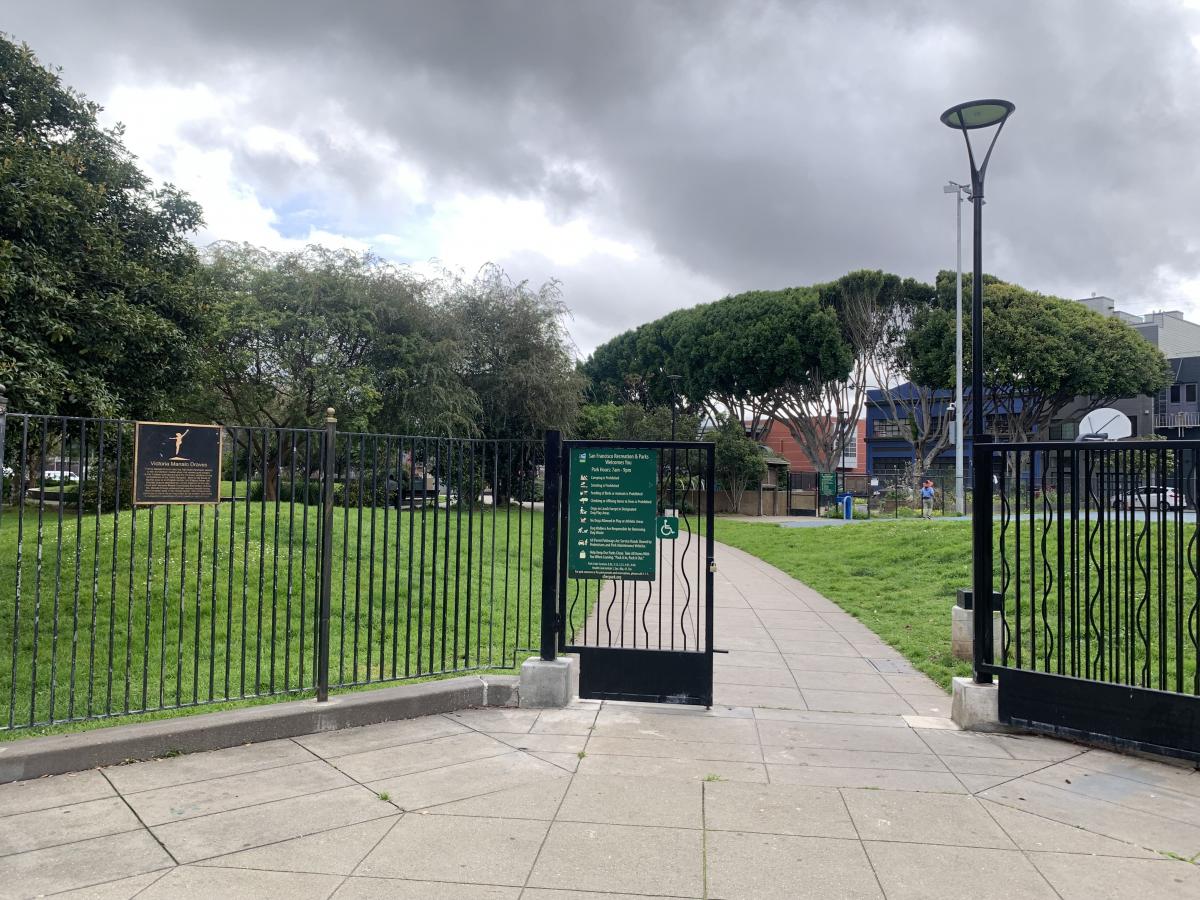
Victoria Manalo Draves Park, named after a local diving champion -- the first Filipina American to compete in the Olympic Games.
LGBTQ+ Advocacy and Events
SoMa has also welcomed artists, activists and the LGBTQ+ community. Along with Filipino residents, they have worked to build community and advocate for equal rights.
Since 1984, the Folsom Street Fair has been held every September in SoMa. Managed by the Folsom Street Community Center, it typically draws hundreds of thousands of people. A smaller, more intimate version of the event also takes place every July. Up Your Alley runs on Folsom Street between 9th and 10th streets.
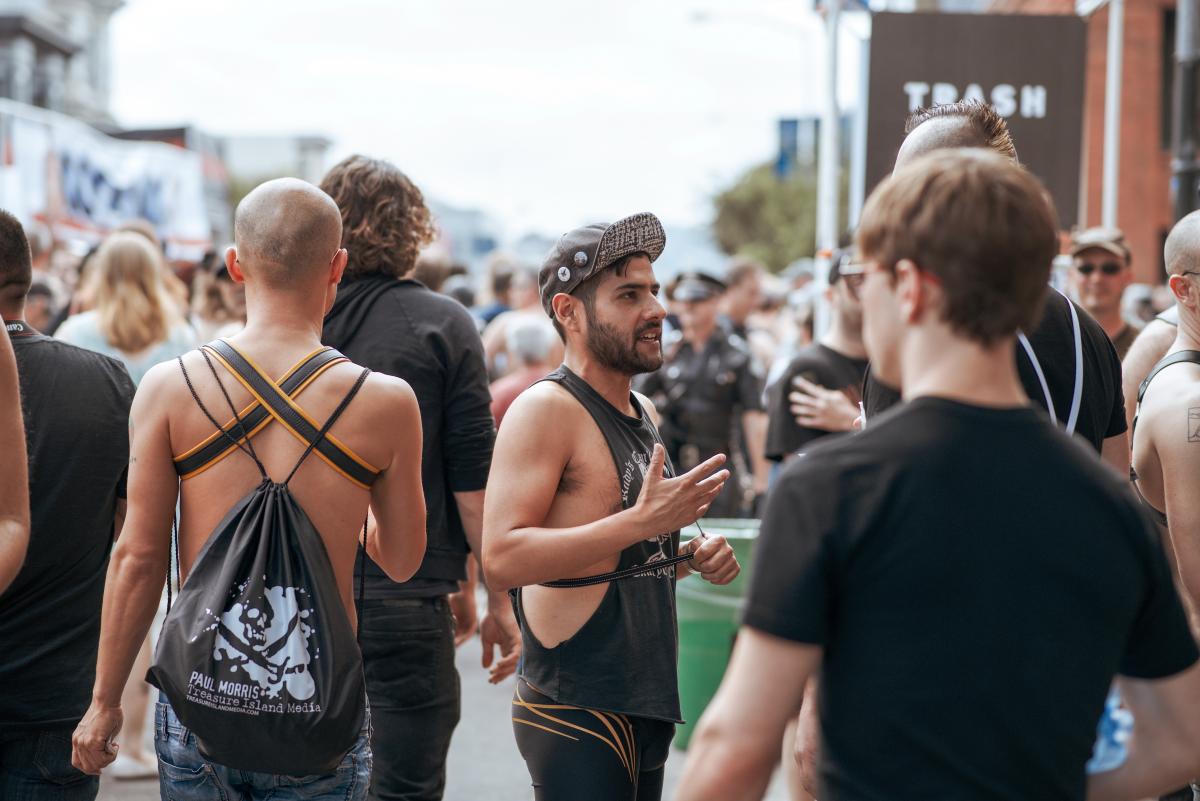
People attend the Folsom Street Fair, held every September in SoMa. (September 2013). Credit: nevskyphoto on iStock
Inclusive Entertainment Scene
The entertainment venues on Folsom are an epicenter for the LGBTQ+ community. They’re also the heart and soul of SoMa.
The Powerhouse Bar at Folsom and Dore Street is an anchor within the Leather & LGBTQ Cultural District. F8 Night Club & Bar, 1015 Folsom and the Cat Club feature DJs and other musical acts to get people moving throughout the night.
The Stud SF is reopening at a new location at 1123-1125 Folsom Street. This legacy business was the first to showcase alternative drag performances. It was all made possible by legendary San Francisco drag performer Heklina.
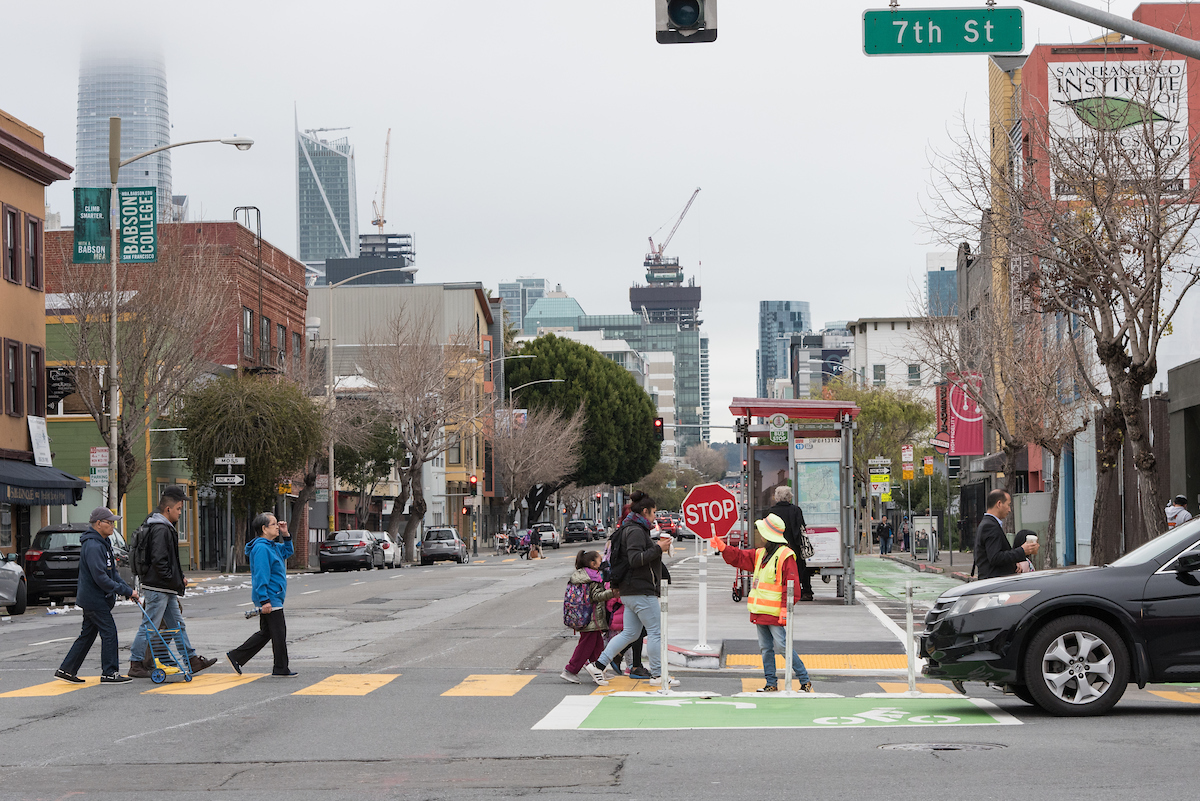
Folsom Street at 7th Street looking east.
Local Businesses Honoring the Past
For more than 30 years, legacy business Ruby Sailing has been hosting sailing tours on the Bay. At the other end of Folsom is the Flytrap. It’s one of the oldest restaurants in San Francisco. Locals started calling it “the flytrap” because the original owner would put food samples on display and cover them with fly traps. This was in the late 1800s when horses and carriages roamed the street.
Safety Improvements: Introducing the Folsom-Howard Streetscape Project
Although Folsom Street is known for its rich history and culture, it’s also on the Vision Zero SF High Injury Network. This means Folsom is among the 12 percent of streets that account for 68 percent of severe and fatal traffic crashes in San Francisco. Our agency partnered closely with the community to find the right solution for the corridor.
Starting in 2016, our project team met with stakeholders to discuss areas of high concern and suggested improvements. From our project planning through conceptual design stages:
-
550 people attended open houses
-
1,300 people responded to surveys
-
Staff met with more than 110 businesses and 20 community groups along the corridor
The project team heard concerns such as: people walking are afraid they cannot be seen by drivers when they cross the street. Vehicle volumes and speeds are high while it takes people time to cross the street. People biking feel that the current bike lane on Folsom is too narrow and doesn’t adequately protect them as they ride next to vehicles.
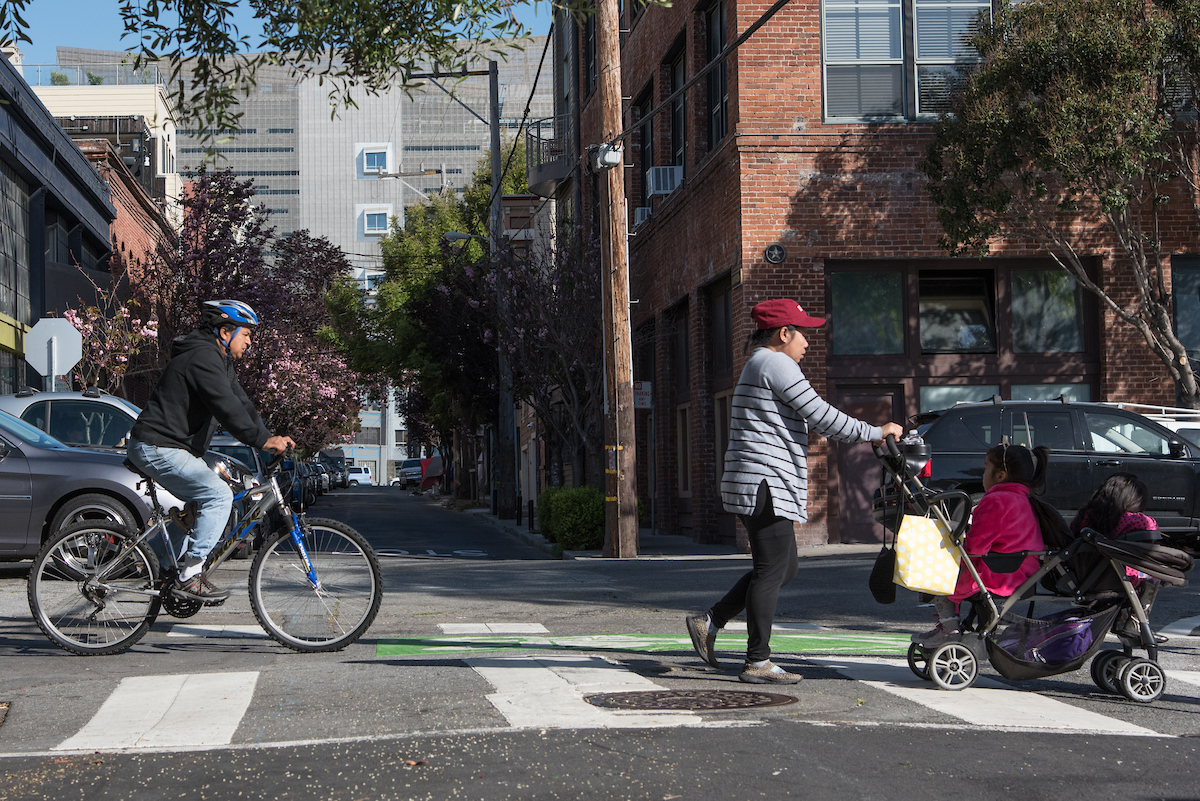
People bike and walk on Folsom Street.
After three years of outreach, we incorporated these concerns and created the Folsom-Howard Streetscape Project. It will improve Folsom between 2nd and11th streets with:
-
A two-way (east-west) bikeway protected by a concrete median
-
A transit-only lane
-
Wider sidewalks
-
Decorative street crossings
-
Benches, new trees, landscaping and more
The goals of the project include:
-
Improving comfort, safety and access for people bicycling, walking and riding transit in SoMa
-
Enhancing the street with new trees, seating, additional street lighting and cultural markers such as decorated crosswalks, plaques and signage.
We’re set to break ground later this year. In the meantime, project ambassadors will reach out to businesses and host an open house to answer questions.
You can learn more about the project and subscribe to project updates by visiting the Folsom-Howard Streetscape Project page (SFMTA.com/FolsomHoward).
Please share feedback or send your project questions to the project team at Folsom@sfmta.com.
Check out our video below to learn even more.
